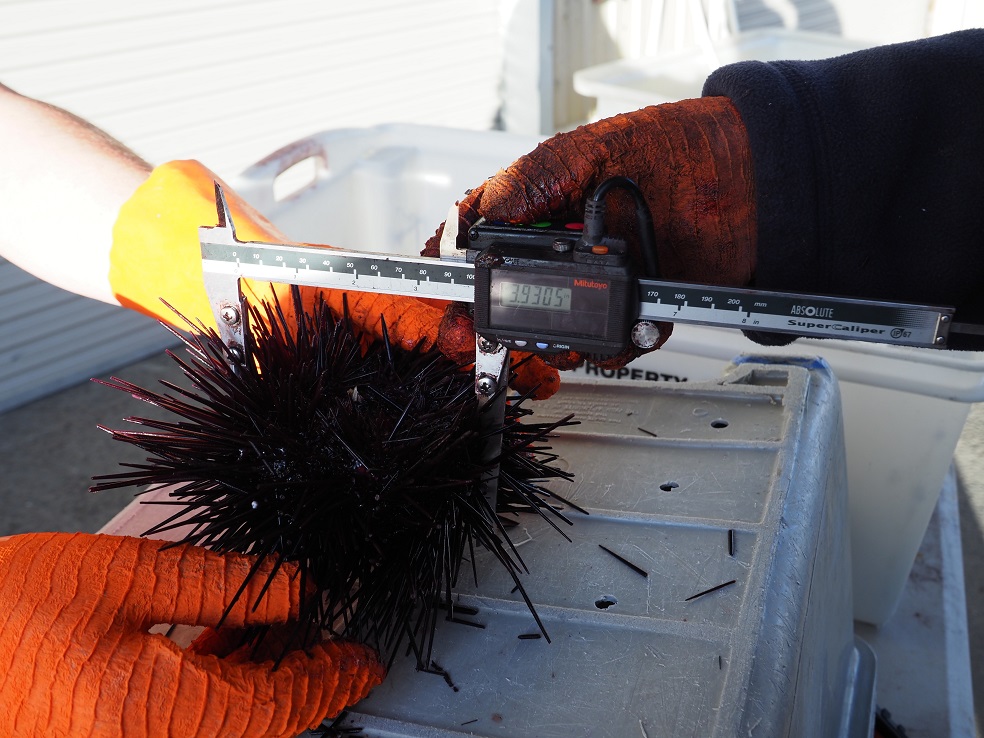
Invasive Longspined Sea Urchins Centrostephanus rodgersii were the target of a recent ‘complete harvest trial’ conducted between Marion and Fortescue Bays on Tasmania’s east coast, and IMAS researchers were on hand to monitor the trial and conduct sampling.
The complete harvest removed all size classes of Centrostephanus, and was implemented to prevent large scale urchin barren formation in productive abalone and rock lobster habitat.
Funding by the Abalone Industry Reinvestment Fund (AIRF) enabled divers within the Tasmanian Commercial Dive Association (TCDA) to complete the task.
IMAS researcher Dr John Keane led the monitoring team who sampled almost 10,000 urchins, both at the boat ramp and in the processing factory, over 11 of the 13 harvest days.
“We used the data from 37 unique catches to estimate the total harvest, which was over 114,000 urchins. More than half of these urchins were under the feasible processing size of 85 mm test (shell) diameter,” Dr Keane said.
“By weight, two thirds of the 35-tonne harvest was available for the RTS PauaCo facility in Electrona to process.
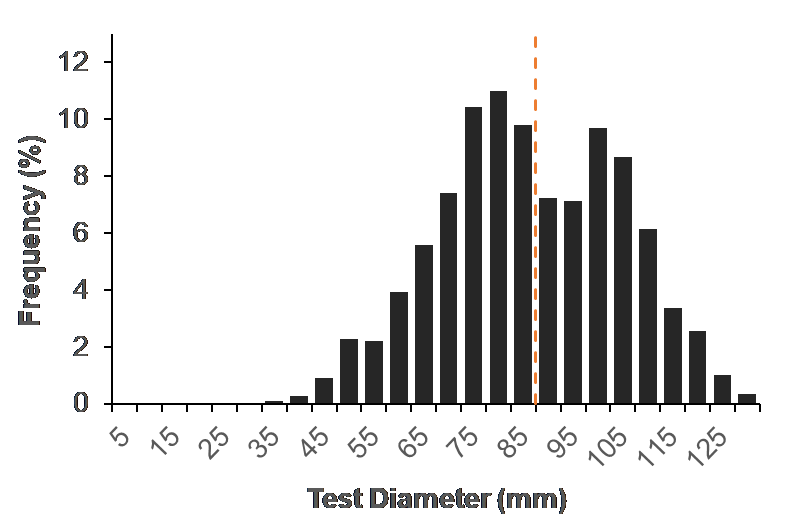 “We identified two clear peaks in size structure at 80 and 100 mm, and found a third peak at some sites of less than 60 mm (see graph, right), which indicates that recruitment of Centrostephanus is episodic and continuing," he said.
“We identified two clear peaks in size structure at 80 and 100 mm, and found a third peak at some sites of less than 60 mm (see graph, right), which indicates that recruitment of Centrostephanus is episodic and continuing," he said.
(Figure, left: Size distribution of Centrostephanus, recorded in the TCDA complete harvest trial)
New GPS and depth loggers, which are being rolled out in the abalone industry, were used during the harvest trial.
These 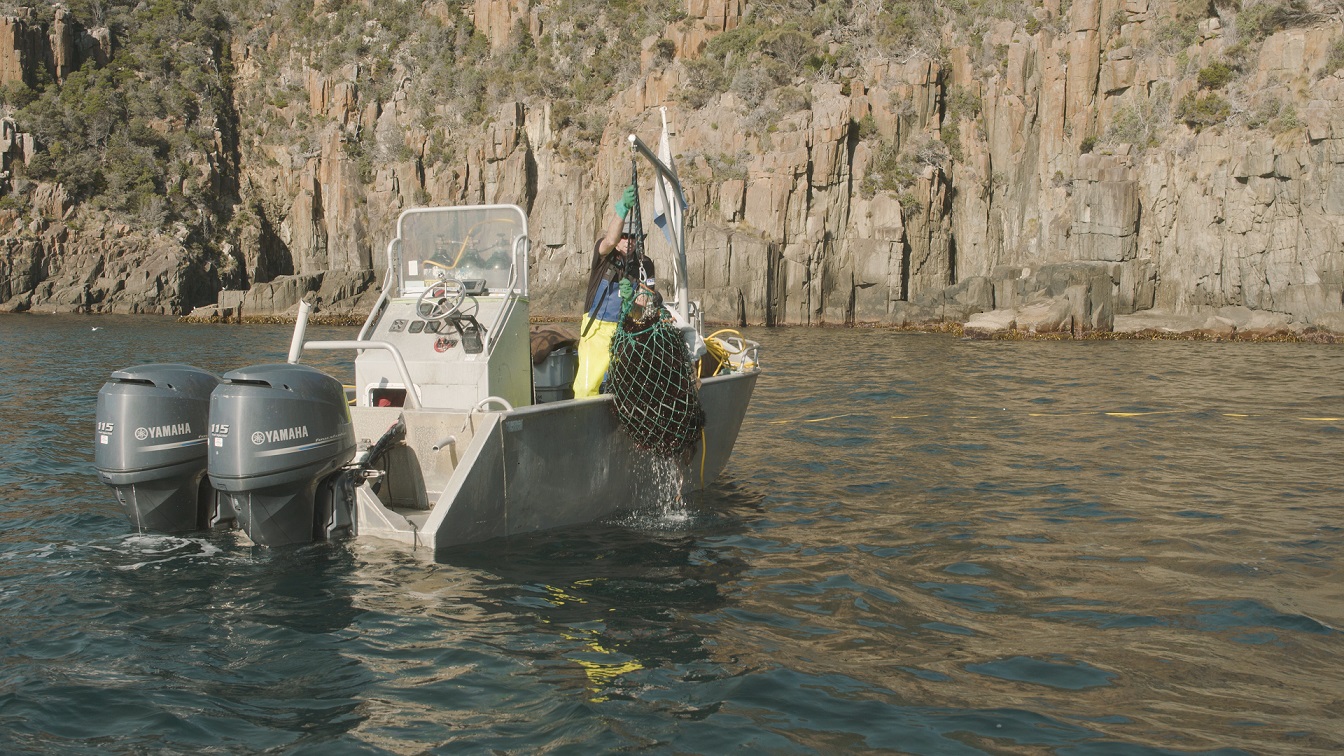 transmit data back to the researches after each fishing activity, and during this trial enabled daily fine-scale mapping of diver activities and facilitated adaptive fishing practices.
transmit data back to the researches after each fishing activity, and during this trial enabled daily fine-scale mapping of diver activities and facilitated adaptive fishing practices.
Dr Keane said the highest diver activity mapped by the loggers correlated with barren patches identified during IMAS 2017 video surveys.
“In 2017, less than 5% urchin barren was observed in the harvest area between Marion Bay and Fortescue Bay.
"If increases in urchin abundance mirrored those observed along other sections of coastline, this could have expanded to 15–20% within 15 years,” he said.
Following the harvest trial, IMAS will revisit towed video sites in late-2020, to monitor kelp recovery.
The Abalone Industry Reinvestment Fund (AIRF) funds projects aimed at supporting and increasing the sustainability and productivity of the Tasmanian abalone fishery, both biologically and economically, while also addressing the impacts of the Longspined Sea Urchin (Centrostephanus rogersii) on the marine environment.
Find out how IMAS research is helping to solve the Centrostephanus problem here
Photos: Harvesting action on boat, Tasmanian Commercial Divers Association; Measuring urchins, Craig Mundy IMAS
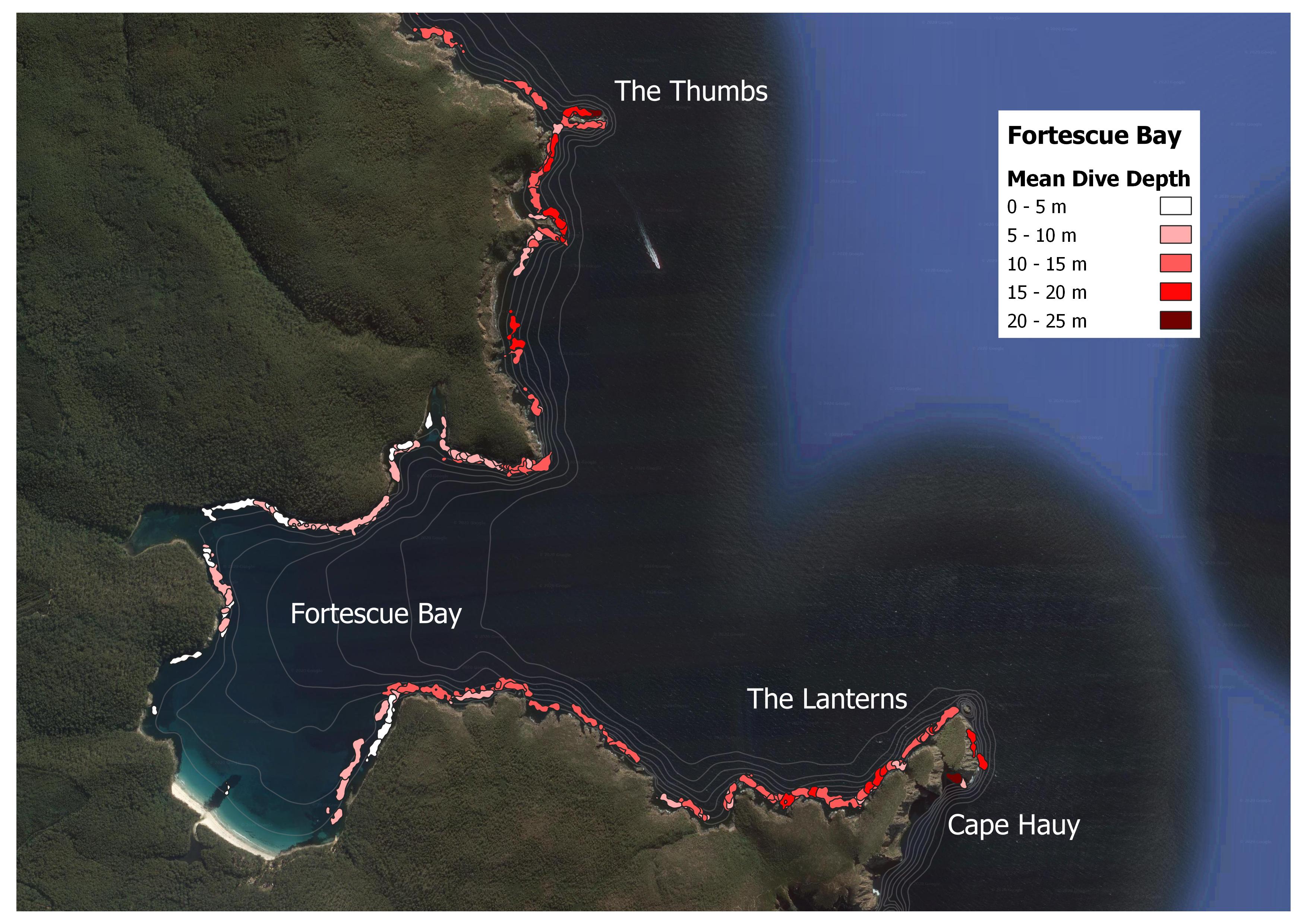
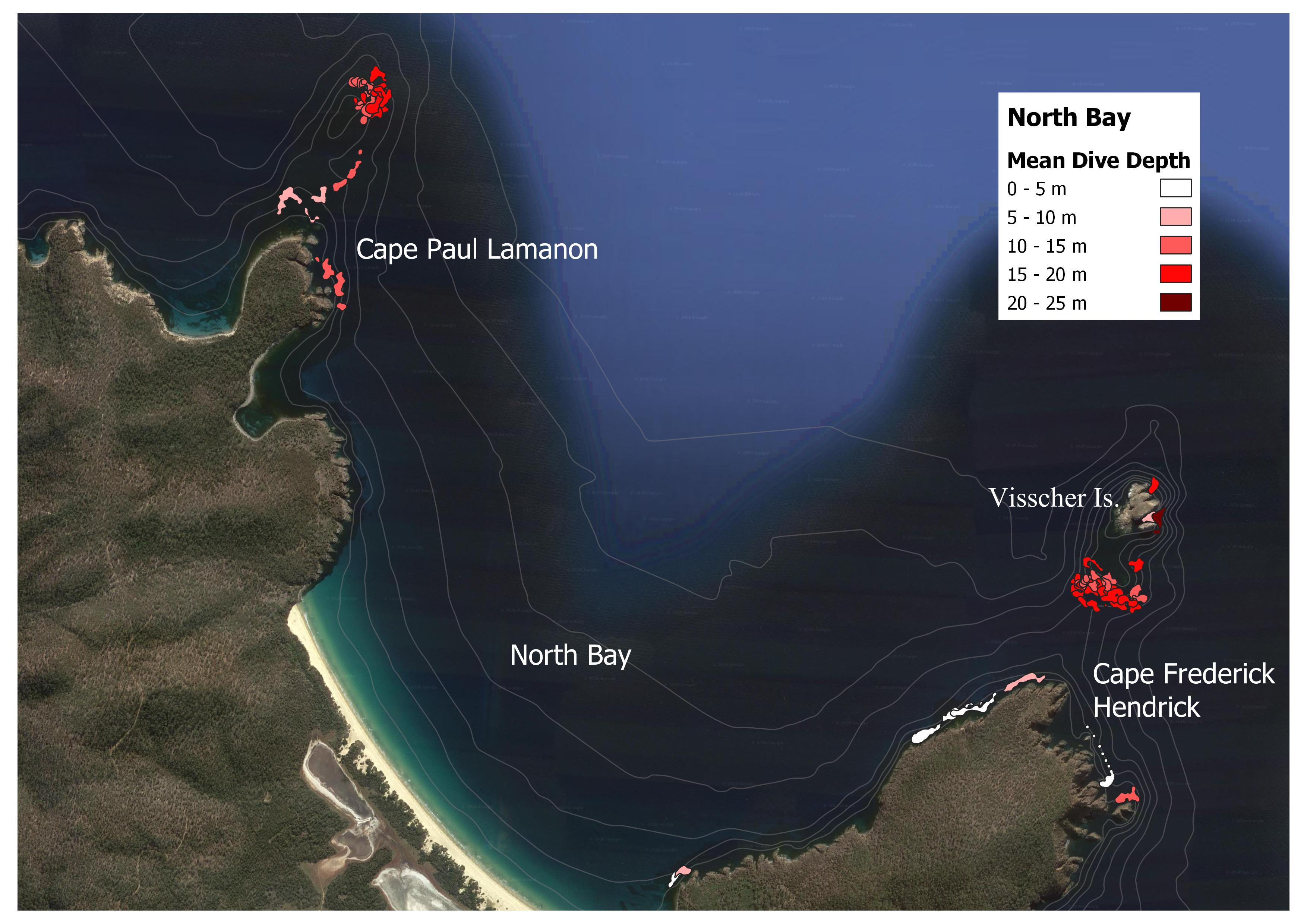
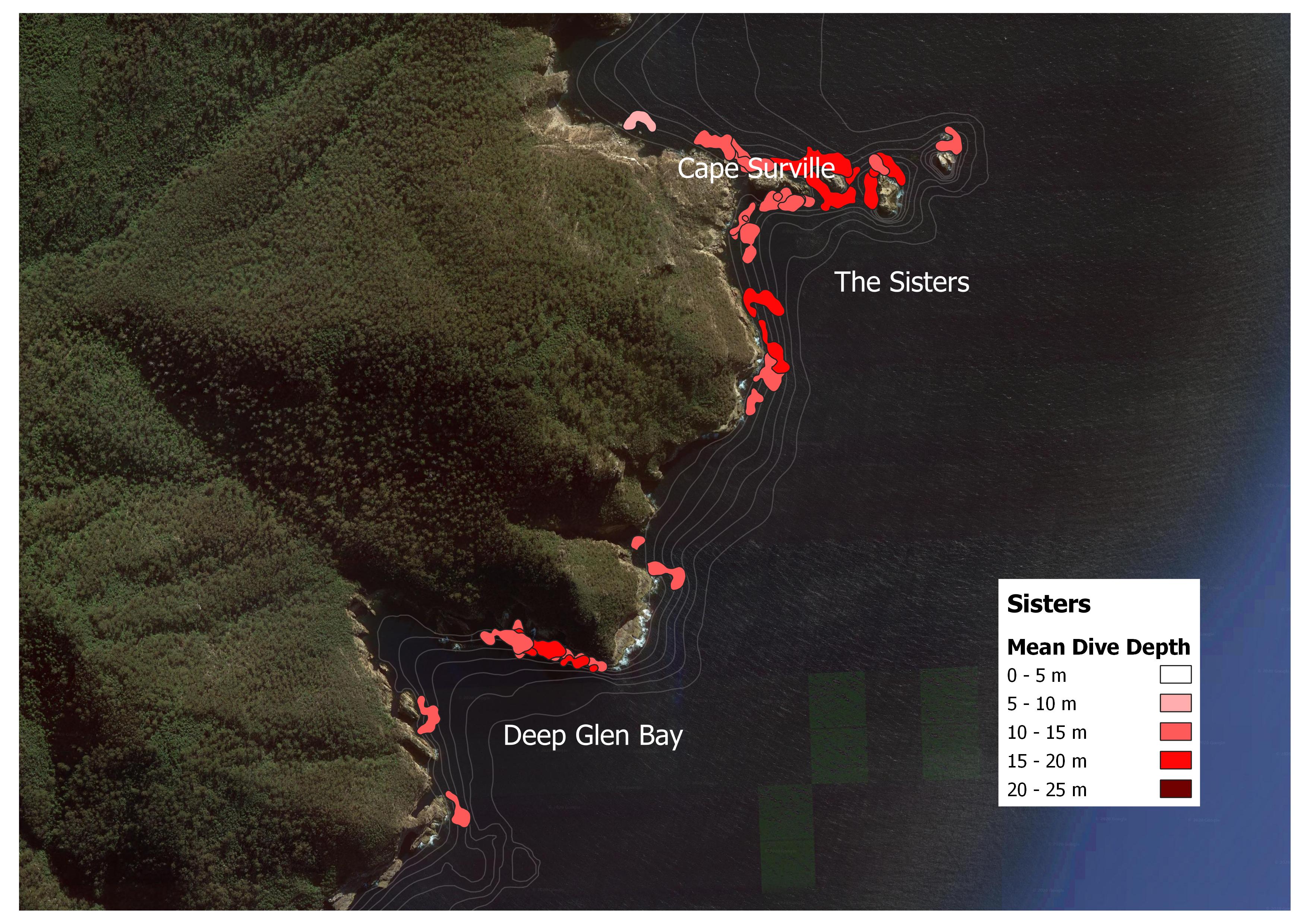
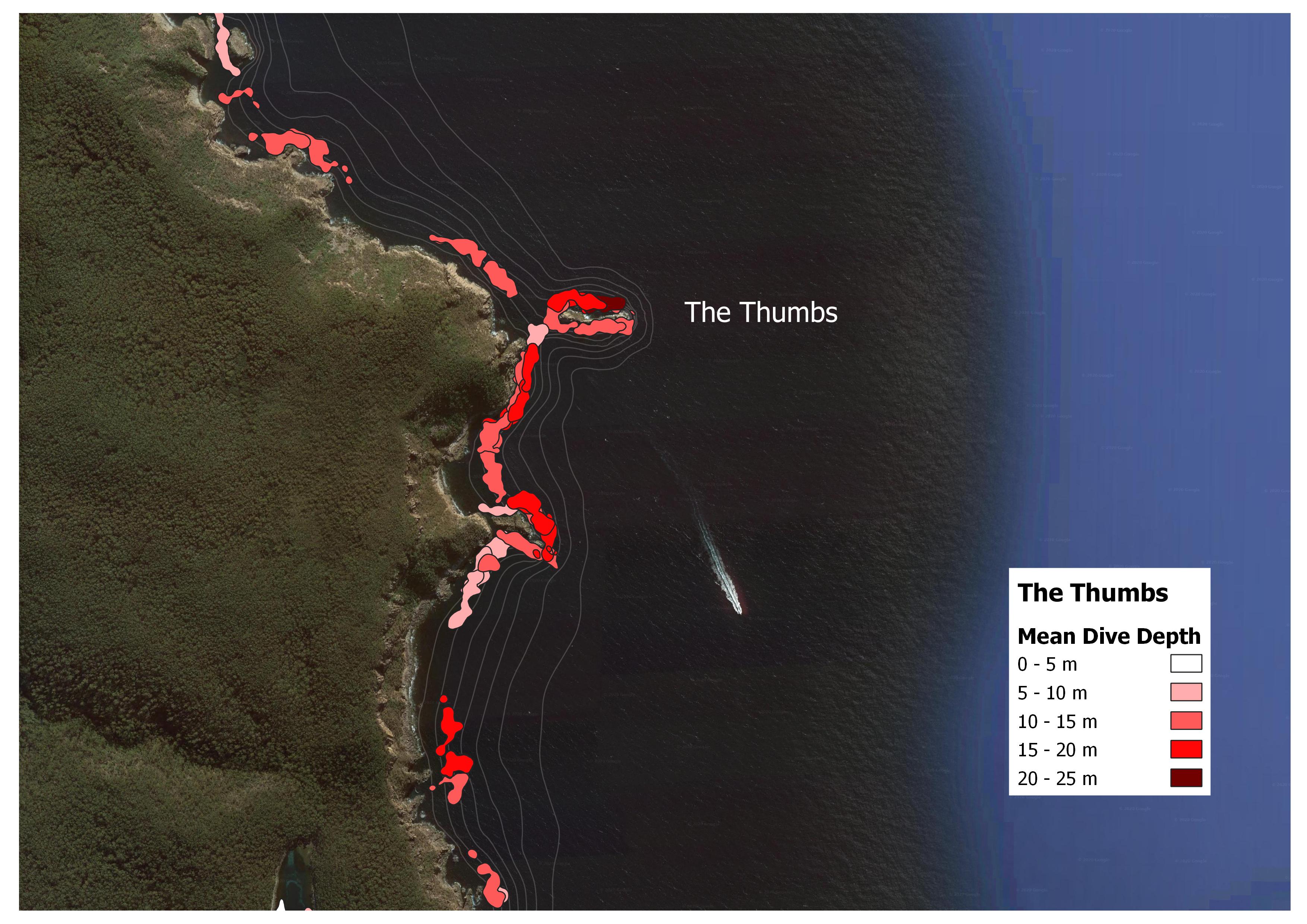
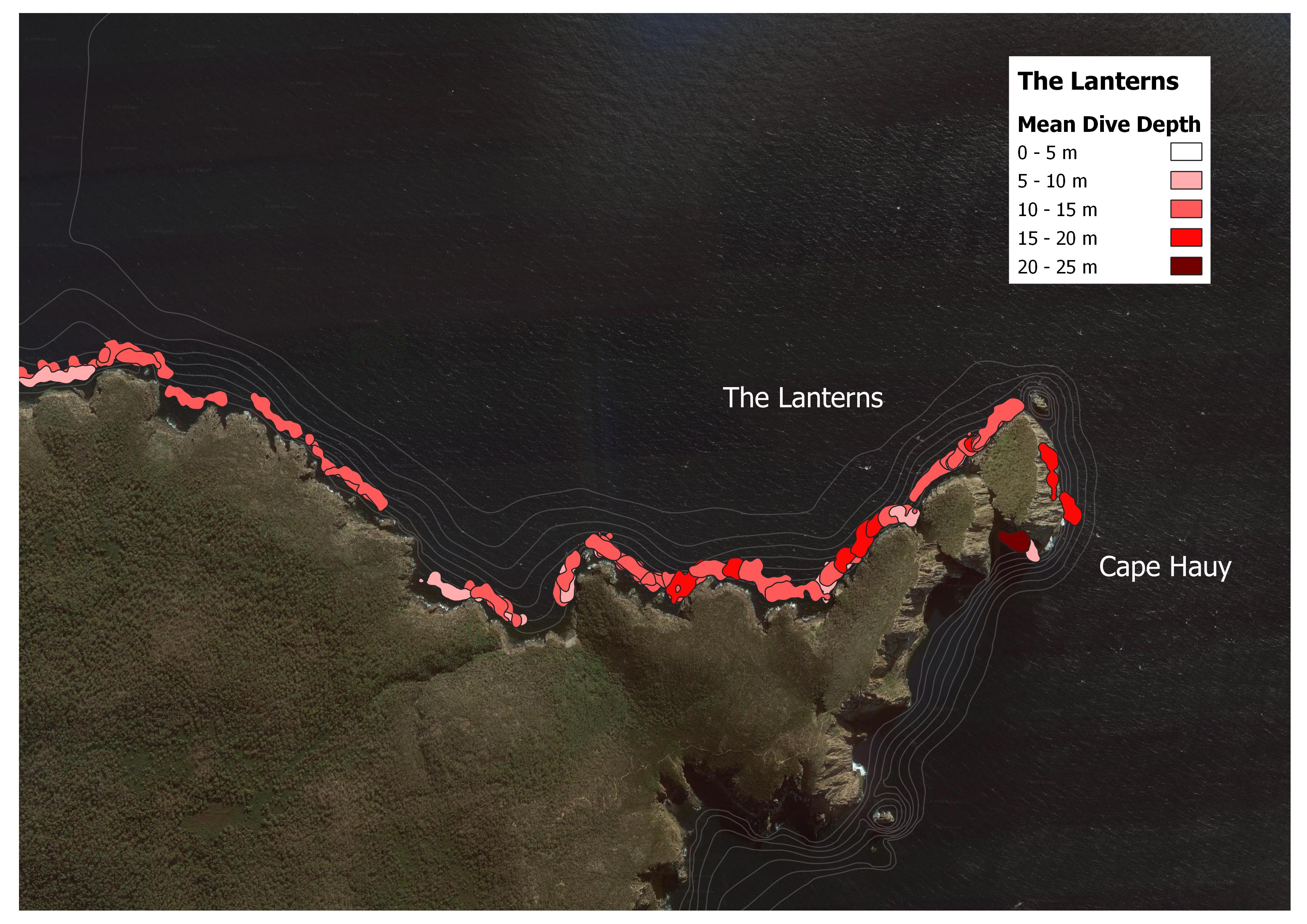
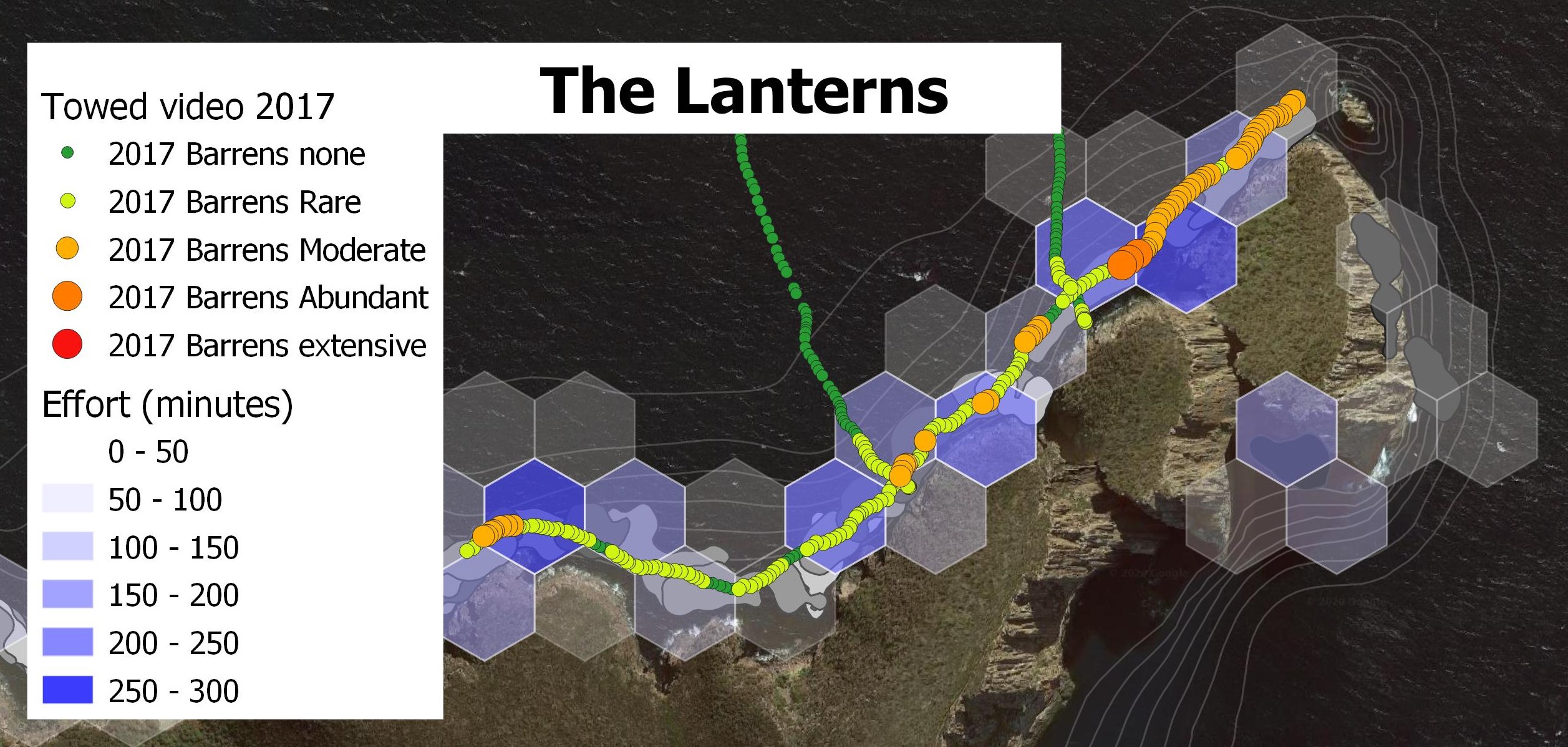
Above: Map of the Lanterns (Cape Huay) highlighting total dive effort, overlayed with
2017 towed-video tracks identifying Centrostephanus barrens